How’s it going Train Loco readers! Today we have an awesome guest blog by Strength and Conditioning Coach Doug Fioranelli. We’ve read Doug’s blogs before and we are big fans of his work because he uses practicality and leaves you with great take home points that you can go and apply right away. So we asked him to spread some knowledge with the Train Loco readers so you all could get into the weight room and apply some “workout finishers” to your training protocols and further your gains. Enjoy!
-Eric and Chris
Closure. For Type A personalities this is an important concept that must happen before one can move on. With family life, work environment, relationships, and Yes, even training, closure is necessary for structured individuals to reflect, assess, validate and embrace what is coming next.
In the area of strength training; closure can come at the completion of a contest, reaching a targeted goal or personal record and can even happen during a training session. Trying a new movement for the first time, adding weight to the bar you haven’t done before or squeaking out that one extra repetition are all areas of great accomplishment that can close out one small journey through fitness.
One other area that determines one’s self worth in the gym is the feeling of a good training session. The heart rate is up, the sweat draining from the forehead and the inability to muster up the strength to even crack a smile at the attractive person across the room validates a great sense of accomplishment and adds closure to that training day.
If you are one of these people that need to feel this way then adding the occasional Finisher Circuit to your training program will increase your metabolism, build up strength-endurance and keep your crazy mind content. In this article I will discuss how to establish these Finishing Circuits so you can throw them into your training program.
What are Finishing Circuits?
Finishing circuits are simply adding a group of exercises at the end of a workout to be done back-to-back based on a certain number of repetitions or on a time interval. They are designed to be done with moderate amount of weight to allow for continuous work. This, in turn, creates a demand on your muscle endurance and cardio vascular system.
Muscles can become fatigued and even burn, breathing will become labored, the heart rate increases to keep up with the muscles’ demand for increased oxygen and massive amounts of sweating will occur to cool the body down. The great news is that your metabolism is way up which means that getting the body back to its normal state will require a lot of fat burning.
Who are Finishing Circuits good for?
From my experience I can argue the case that any trainee can benefit from adding finishing circuits into their programming. I incorporate them into all of my athletes’ training programs with the primary focus of replicating the repeated stop-and-go power production needed to perform in many sports.
I have found that most of my Police, Firefighters, Military professionals and adults who frequently lift weights do so in a traditional sense where they choose big movement exercises (squats, bench press deadlifts) and go relatively heavy with the weight then rest for a long period of time to regain their strength to tackle the next set. I see my role as a trainer to complement not only their daily careers but to enhance the areas that need to be brought up to speed; sometimes to push them to do things they would not do on their own. Cardiovascular conditioning is essential for first responders called into action and most busy adults do not train that middle ground between strength and endurance, usually they do one or the other. I have found the best way to enhance their training is through these
From first-hand experience, I know finishing circuits enhance the physical attributes for all the athletes I train. Although I am not an expert on figure and fitness competitors, I imagine that they would also benefit from finishing circuits to burn more body fat and preserve muscle due to their high metabolic output than steady-state cardio can do alone I will let the Dynamic Duo be a better judge for you fitness and figure competitors.
What exercise should I choose?
The beauty of these circuit finishers is that you are essentially limited by your imagination when it comes to their construction. For my athletes mine are made up the day their training program calls for it, unlike their strength program which is constructed weeks in advanced with only minor daily corrections.
My general rule when choosing exercises is that they should be easy to learn and relatively safe to perform for repeated amount of repetitions. Movements like Olympic lifting, barbell back squats and bench press are not my favorite for finishers because technique is highly important when performing these movements and when fatigue sets in it results in technical breakdown then the injury door begins to open up .
I like to take into consideration what strength exercises they have done prior that day. If their program had pull ups and dumbbell rows I would refrain from more pulling work and add a pressing movement like a push up variation. If the strength portion had heavy legs like squats or deadlifts I would choose a single leg movement like an alternating lunge variation or step ups.
Finishers are great for adding bodyweight exercises, core work and even those unconventional training movements like kettlebell swings, sandbag cleans, medicine ball slams, battleropes, tire sledgehammer works and sled drags.
Choose movements that allows for an active rest between exercises. For example, if the first movement is alternating lunges I may choose a traveling push up for the second giving the legs a break while training the upper body.
When using a weight during these finishers the weight should be low to moderate, remember the goal is to consistently move without compromising technique and safety to achieve the effect we are looking for. I do allow people to choose their weight when appropriate which is relative to their strength and also how they feel on that particular day. Some days people want to go a bit lighter and get more repetitions and other days maybe a little heavier and do less repetitions.
I generally choose 3-6 exercises for the finishers.
How much work should I do?
Being completely customizable you can choose how to perform the finisher. The easiest ways is to either perform a particular number of repetitions at each exercise station and then move right to the next, repeating until all of the exercise stations are complete the other has you performing work at each station for a particular amount of time. Time intervals are my choice when I construct finishers. I have found that a 2:1 work to rest ratio to be best ranging from 20-60 seconds work to 10-30 seconds rest. I like the mid-range intervals best (30-40 work:15:20 rest) because I have found them to be the optimal amount of time to get most movements performed continually and consistently before complete form breakdown and fatigue occurs in trained individuals. Mix up your intervals on different days, some days work longer or rest less and see what is best for you and your clients.
I usually do 2-4 rounds maximum depending on fatigue level and the number of exercises chosen. The most common finisher set up for my athletes is three sets of four exercises for 30 seconds of work and 15 seconds of rest. After each set I have them rest for 1-2 minutes before starting the next set.
How often should I do finishers?
This is completely dependant on you and your goals. My athletes usually go through a finisher circuit once during their training week, occasionally twice if they need to increase their endurance when they are out of season. In-season I try to keep them once a week, however due to games or general fatigue I may not have them do them at all.
For the general public looking to get into shape I would say adding finishers 1-2 times a week would benefit them greatly. You can have one day where the finisher is longer and one day where it is shorter. I like to have a few days in-between finisher days to ensure proper rest.
Finisher example
Here is one of my favorite finishers that I frequently use. As you can see it is a mix between bodyweight, kettlebell, traditional and unconventional exercises. Feel free to interchange according to what you have access to.
|
Exercise |
Work |
Rest |
| Bar Inverted Rows |
40 sec |
20 sec |
| 2-Arm Kettlebell Swings |
40 sec |
20 sec |
| D.Bell Curl—>Press |
40 sec |
20 sec |
| K.Bell Lunge and Pass |
40 sec |
20 sec |
| Tire Sledge |
40 sec |
20 sec |
The benefits of adding finishers can take you to the next level of fitness. They are challenging and fun and best when you have a training partner to share in the misery. Go out and get some training closure now.
Bio:
Doug Fioranelli is the owner of Rise Above Performance Training™ where he uses personal progressive programming to increase his athlete’s performance and reduces their risk for injury.
Doug holds a Master’s Degree in Kinesiology and has over 10 years of experience in athletic rehabilitation and strength training, he has helped coach many clients from Jr. High to Olympic and Professional athletes at all levels.
Check him out his blog at DougFioranelli.com and sign up for his monthly email newsletter for more training articles and videos.
CHECK US OUT ON:
FACEBOOK:
TWITTER:
YOUTUBE:
INSTAGRAM:

